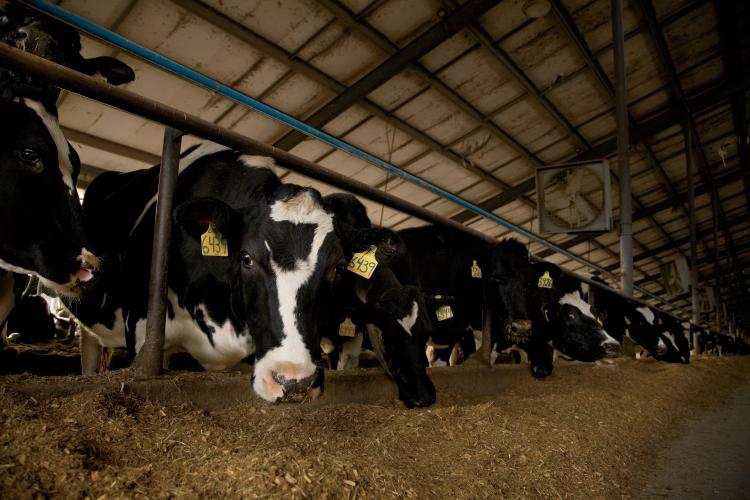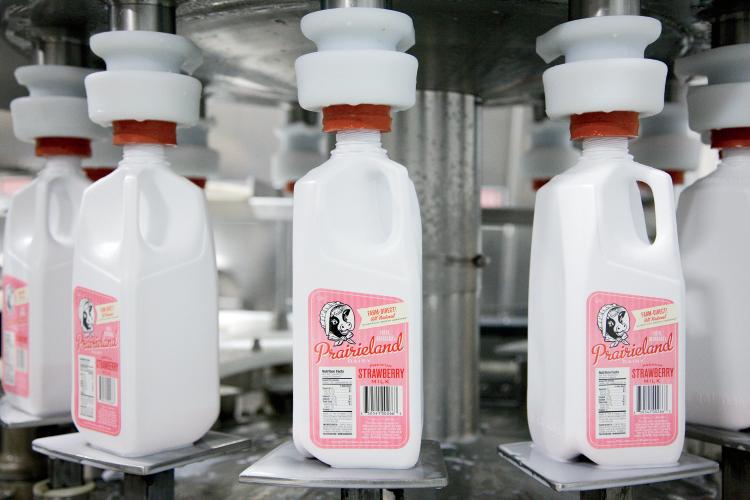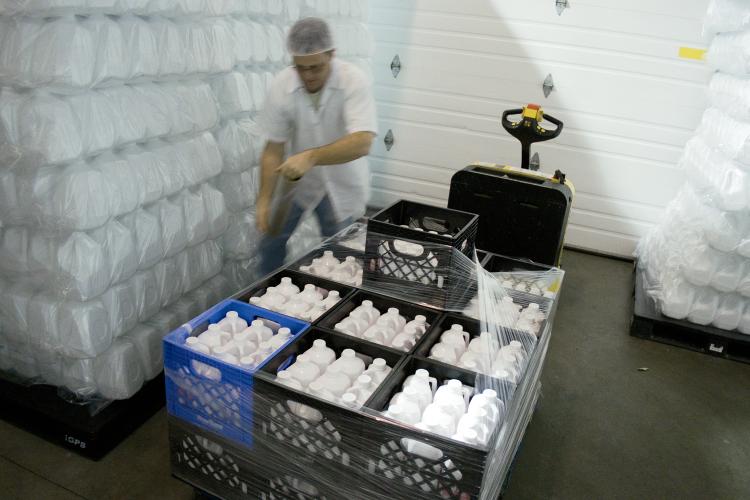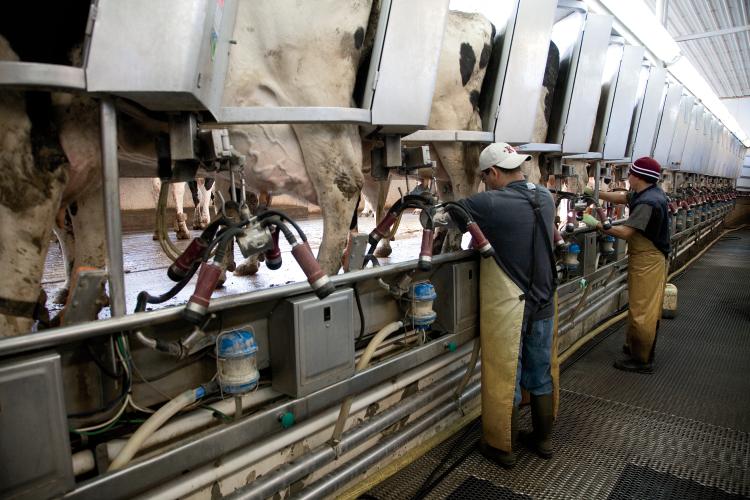Home > Nebraska > Nebraska Farm to Table > Nebraska Dairy Goes From Cow to Table
Nebraska Dairy Goes From Cow to Table

How long do you think a gallon of milk takes to go from farm to processor to the dairy aisle of your local grocery store? A month? A week?
“Fluid milk, the kind you buy in a jug to drink at home, usually goes from the farm to store shelf in 48 hours,” says Rod Johnson, senior manager of industry relations in Nebraska for the 10-state Midwest Dairy Association.
This quick farm-to-table process is possible because the majority of local grocery store milk comes from one of Nebraska’s 200 dairy farms.
“Most milk (on grocery shelves) is probably (from a dairy) within 100 miles,” says Lowell Mueller, who runs a fifth-generation, 200-cow dairy farm in Hooper. “That is the big thing that consumers are interested in now – going local. And I think that’s a fair statement o say that most milk comes from local producers.”
Its local impact also can be seen in the jobs provided by the industry. “A dairy employs a lot of people, and there are a lot of tax bases because of all the buildings, equipment, machinery and things like that,” says Mueller, who also chairs the Nebraska Division of the Midwest Dairy Association. “The economic impact is pretty significant.”
In fact, the state’s dairy industry generates 138 million gallons of milk and $248 million in milk sales every year, according to Midwest Dairy Association statistics.

A Family Affair
Not only do milk and other dairy products have a local connection, but 100 percent of Nebraska dairies are family owned and operated. “The size of the farm doesn’t make any difference,” Johnson says. “We have very large family farms and very small family farms.”
One example of a larger family farm is Prairieland Dairy in Firth, which was formed by four relatively small dairy farm families.
“That’s the main thing that makes us unique,” says Dan Rice, general manager. “We combined our cows in order to build a bigger dairy and to be able to have a future for our next generation. We’re not just a sole proprietor, but we’re four family farms working together.”
The farm is located near Lincoln on the site of what was once Obbink Farms. Rice and his family came to Nebraska from Pennsylvania in 1998, bringing with them plenty of dairy experience and some 80 cows. They partnered with the Obbinks to open Prairieland.
A few years later, in 2005, they were joined by the Goossen family and the Eickhoff brothers, bringing their milking cow total to 1,500 and becoming one of the largest dairies in the state.

Focus on Sustainability
Despite its size, sustainability is at the forefront of what they do, Rice says, whether socially, economically or environmentally.
“We’re trying to address all three to keep the farm around for the next generation,” he says.
On the environmental front, Prairieland has its own water filtration system to ensure its animals have the best water quality, and the dairy recycles water where applicable. It uses only natural fertilizers and engages in other environmentally friendly practices, such as an extensive compost system for manure. Its short distance for distributing its milk also provides significant conservation on fuel and, as a result, less pollution.

Learning More About Milk
Prairieland also offers tours of its facilities. Groups can schedule a visit to the dairy, and Rice says it receives 15,000 to 20,000 visitors a year.
“We get everybody from preschool kids all the way up to groups from retirement homes,” he says. “You name it, they’ve been here. We educate them about modern agriculture and why we do what we do. It’s really important to educate consumers about how their food is being made, and how efficient and sustainable it is.”
Most visitors on a field trip are familiar with how cows are milked, but few know what happens next.
Milk Processing
After it comes from the cow, the milk must quickly be cooled from the cow’s body temperature – about 100 degrees – down to about 40 degrees.
“The milk is cooled as rapidly as possible,” explains Johnson, “and every day or other day, depending on size of the farm, the milk is picked up and taken to the processing plant.”
Though a few farms process milk and dairy products on site, most send their product to regional processing plants, where it’s packaged and distributed to area grocery stores – all in about two days’ time.
Of course, dairy products go far beyond a gallon of milk, so the 48-hour timeline doesn’t apply to cheese, yogurt and other products. However, the nutritional benefits certainly do.

Nutritional Benefits
“If you look at a lot of foods, dairy ingredients are in them one way or another,” Mueller says. “Ingredients are pretty important nowadays because of the protein, calcium and lactose found (in dairy products).”
In fact, the Dietary Guidelines for Americans report that milk and milk products are linked to improved bone health, especially in children and teens, and a reduced risk of cardiovascular disease, Type 2 diabetes and high blood pressure in adults. Healthy, fresh and local – three great reasons to pour yourself a glass of milk.



